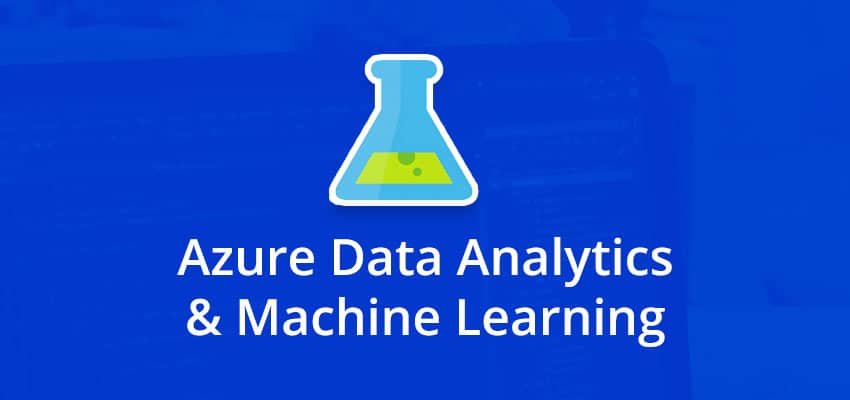

How we approach machine learning today is by showing machines a lot of data and expecting them to learn associations or find patterns on their own. For many of the most common applications of AI technologies today, such as simple text or image recognition, this works extremely well. However, as the desire to use AI for more scenarios has grown, Microsoft scientists and product developers have pioneered a complementary approach called machine teaching. This relies on people’s expertise to break a problem into easier tasks and give machine learning models important clues about how to find a solution faster.
Machine teaching seeks to gain knowledge from people rather than extracting knowledge from data alone. A person who understands the task at hand — whether how to decide which department in a company should receive an incoming email or how to automatically position wind turbines to generate more energy — would first decompose that problem into smaller parts. Then they would provide a limited number of examples, or the equivalent of lesson plans, to help the machine learning algorithms solve it.
In supervised learning scenarios, machine teaching is particularly useful when little or no labelled training data exists for the machine learning algorithms because an industry or company’s needs are so specific.
In difficult and ambiguous reinforcement learning scenarios — where algorithms have trouble figuring out which of millions of possible actions it should take to master tasks in the physical world — machine teaching can dramatically shortcut the time it takes an intelligent agent to find the solution.
It is also part of larger goal to enable a broader swath of people to use AI in more sophisticated ways. Machine teaching allows developers or subject matter experts with little AI expertise, such as lawyers, accountants, engineers, or nurses to impart important abstract concepts to an intelligent system, which then performs the machine learning mechanics in the background.
It is also part of larger goal to enable a broader swath of people to use AI in more sophisticated ways. Machine teaching allows developers or subject matter experts with little AI expertise, such as lawyers, accountants, engineers, or nurses to impart important abstract concepts to an intelligent system, which then performs the machine learning mechanics in the background.
“Even the smartest AI will struggle by itself to learn how to do some of the deeply complex tasks that are common in the real world. So, you need an approach with people guiding AI systems to learn the things that we already know,” – Gurdeep Pall, Microsoft corporate vice president for Business AI.
“If you can teach something to another person, you should be able to teach it to a machine using language that is very close to how humans learn,” – Patrice Simard, Microsoft distinguished engineer.
In supervised learning scenarios, machine teaching improves models by identifying high-level meaningful features. As in programming, the art of machine teaching also involves the decomposition of tasks into simpler tasks. If the necessary features do not exist, they can be created using sub-models that use lower level features and are simple enough to be learned from a few examples. If the system consistently makes the same mistake, errors can be eliminated by adding features or examples.
Microsoft researchers are exploring how to apply machine teaching concepts to complicated problems, like classifying longer documents, email and even images. They are also working to make the teaching process more intuitive, such as suggesting to user’s which features might be important to solving the task.
Imagine a company wants to use AI to scan through all its documents and emails from the last year to find out how many quotes were sent out and how many of those resulted in a sale. As a first step, the system has to know how to identify a quote from a contract or an invoice. Often, no labelled training data exists for that kind of task, particularly if each salesperson in the company handles it a little differently.
If the system was using traditional machine learning techniques, the company would need to outsource that process, sending thousands of sample documents and detailed instructions so an army of people can attempt to label them correctly — a process that can take months of back and forth to eliminate error and find all the relevant examples. They would also need a machine learning expert, to build the machine learning model. And if new salespeople start using different formats that the system was not trained on, the model gets confused and stops working well.
By contrast Microsoft’s machine teaching approach would use a person inside the company to identify the defining features and structures commonly found in a quote: something sent from a salesperson, an external customer’s name, words like “quotation” or “delivery date,” “product,” “quantity,” or “payment terms.”
It would translate that person’s expertise into language that a machine can understand and use a machine learning algorithm that has been preselected to perform that task. That can help customers build customised AI solutions in a fraction of the time using the expertise that already exists within their organisation.
BRAINs for Autonomous Systems combines machine teaching with deep reinforcement learning and simulation to help companies develop “brains” that run autonomous systems in applications ranging from robotics and manufacturing to energy and building management. The platform uses a programming language called Inkling to help developers and even subject matter experts decompose problems and write AI programs.
For instance, imagine a manufacturing company wants to train an AI agent to autonomously calibrate a critical piece of equipment that can be thrown out of whack as temperature or humidity fluctuates or after it’s been in use for some time. A person would use the Inkling language to create a “lesson plan” that outlines relevant information to perform the task and to monitor whether the system is performing well. Armed with that information from its machine teaching component, the BRAINs for Autonomous System would select the best reinforcement learning model and create an AI “brain” to reduce expensive downtime by autonomously calibrating the equipment. It would test different actions in a simulated environment and be rewarded or penalised depending on how quickly and precisely it performs the calibration. Telling that AI brain what is important to focus on at the outset can short circuit a lot of fruitless and time-consuming exploration as it tries to learn in simulation what does and does not work.
The reason machine teaching proves critical is because if you just use reinforcement learning naively and don’t give it any information on how to solve the problem, it’s going to explore randomly and will hopefully hit on a solution that works. It makes problems truly solvable whereas without machine teaching they are not.

Our bootcamp will cover all you need to know about Microsoft data and analytics platforms.